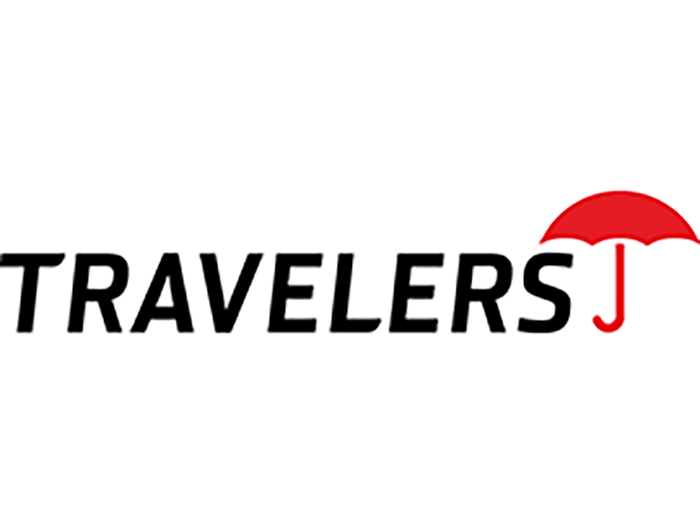Sponsored Content by The Hartford
Three Ways AI Can Help Reduce Risk for Property Owners & Managers

Artificial intelligence (AI) has the potential to help real estate professionals better assess and mitigate a variety of risks, including everything from tenant screening to premises security to property damage mitigation. Implementing new technology strategically can help to prevent losses, improve safety and, ultimately, save money. But new tools come with risks as well, and real estate professionals should consider the pros and cons of each before adopting them. Here are three ways the real estate industry can use artificial intelligence to mitigate risk — and the pitfalls to watch out for.
1) Early Property Damage Detection

Andrew Zarkowsky, Head of AI Underwriting, The Hartford
Smart sensors, connected through the internet of things (IoT), can detect and alert property managers to problems before they spiral into expensive claims.
“These sensors can be used to monitor various aspects of a property in real time — such as temperature, humidity and air quality — and help property managers prioritize their maintenance efforts,” said Andrew Zarkowsky, head of AI underwriting, The Hartford.
Water sensors, for example, can be placed in key areas (such as near sinks, toilets, boilers and refrigerators) to detect leaks or moist conditions early. Temperature sensors can identify a new hot spot and alert users to the need for immediate attention to the electrical system at that specific location, rather than relying on a generic multi-year maintenance cycle.
“The power lies in having a 24/7 monitoring solution that never takes a break or misses a beat,” said Tracey Greene, real estate industry practice leader, The Hartford.
It’s not enough, however, to just install new technology. It’s crucial to have a property maintenance team that understands the technology and has the resources to react promptly, including an on-site mitigation company or cleanup contractor that can address any incidents.
“When all of these elements come together — knowledgeable staff, understanding of the technology and a dedicated team — that’s when the system is most effective. We have numerous examples of incidents being shut down within 10 to 20 minutes which could have otherwise run for an entire weekend or overnight, potentially causing extensive damage throughout the building,” Greene said.
Using IoT technology in an effective way also makes a property a more attractive risk to underwriters.
“If an underwriter is evaluating two different risks, Risk A — which has water sensor technology and water damage prevention planning in place — would likely be viewed more favorably compared to Risk B, which lacks these measures,” Zarkowsky said.
2) Screening Tenants

Tracey Greene, Real Estate Industry Practice Leader, The Hartford
Property owners and managers need to gather a good amount of information from potential tenants before approving an application. AI tools are excellent at gathering and organizing this data quickly, and can scan information for any red flags based on parameters set by the administrator.
“AI can automate repetitive tasks, such as data entry and analysis, freeing up time for real estate professionals to focus on higher-value activities. This increased efficiency can lead to cost savings and improved overall performance,” Zarkowsky said.
However, there are significant concerns to address. Handling financial or personal identifiable information (PII), privacy issues and data breaches involves major risks. Any system that collects and houses this information must have strong security measures in place, and property owners will need a detailed breach response plan in place should those defenses fail.
A more subtle and perhaps more challenging risk to manage is that of bias in the screening process. If the system “learns” to identify red flags or is using parameters based on datasets with inherent bias, it could lead to discriminatory decision-making.
“If bias is built into the system, it may lead the system to exclude certain individuals or groups that should have been included. The bias may be unintentional, but it still results in a potential discriminatory outcome,” Greene said.
Establishing proper governance and risk management measures is essential before implementing AI in real estate screening processes. Ultimately, AI used in this way will still require human oversight to ensure that input data is accurate and that any potential bias is caught.
3) Enhancing On-Site Security
Smart cameras and surveillance robotics with internet-connected screening capabilities can essentially keep more eyes and ears open around a property, alerting owners and managers to intruders or acts of vandalism immediately.
“Autonomous security devices could play a significant role in real estate, especially in the post-COVID era, where vacant office properties may become more common,” Greene said. “These devices, utilizing robotics, could independently control and monitor sites, reducing risks such as trespassing, vandalism and theft.”
Beyond vacant properties, these robotics could also detect irregular behavior within occupied buildings during nighttime hours, performing tasks that are currently handled by human security personnel. The autonomous nature of these devices also allows them to operate independently, potentially enhancing security measures across a variety of real estate scenarios.
However, like any form of technology, these tools are susceptible to malfunction and hacking. They can also create a false sense of security. Just because technology doesn’t get tired or distracted the way a human security guard might doesn’t mean it can’t miss things or misinterpret a scenario.
“Both human security personnel and AI have their advantages and disadvantages. AI has the potential to provide more consistent threat assessment, but its effectiveness in real-world scenarios is still uncertain. If the AI fails to screen properly without human oversight, it might allow unauthorized individuals into the premises. This could result in theft or other undesirable occurrences,” Zarkowsky said.
“Ultimately, it’s important to recognize that there are both positive and negative aspects to consider when comparing AI to traditional security measures,” Zarkowsky added. “The situation is not one-sided, and a balanced perspective is necessary when evaluating the role of AI in security.”
How to Pick the Right AI for Your Property
Many property owners recognize the potential of AI and connected technology in helping them mitigate risk but don’t know where to start. Installing a new tool without a proper assessment of its ROI and impact on the overall risk profile could end up being a waste of valuable time, effort and resources. Experienced risk professionals, however, can help to determine which solutions will work best for a given property.
“You have to know what your top exposures are and exactly how a certain technology will reduce that exposure,” Greene said. Real estate professionals need to take the time to thoroughly evaluate their organization’s specific needs and goals to ensure that the necessary resources and infrastructure are in place to support the technology.
“This is where specialized agents, brokers and insurance carriers come into play,” Greene said. “An individual real estate company might lack the perspective to know what problems need solving. You may own a single building or a portfolio of buildings, but a company like The Hartford insures hundreds of thousands of buildings. With this wealth of data, we have the knowledge to identify a client’s largest potential for loss. Once this is clear, it becomes a matter of plugging in the appropriate technology, whether it’s robotics, AI, vision systems, water sensors or other solutions.”
Zarkowsky added, “At The Hartford, our goal is to partner with customers who genuinely care about their properties and employees and are proactive about managing risk. We prefer to work with clients who want to implement effective risk management strategies across property, general liability, workers’ compensation and employee safety. By working with dedicated clients and expert risk professionals, we can together move the needle of technology adoption to reduce the total cost of risk.”
To learn more, visit Large Business Insurance | Large Business Insurance Policy | The Hartford.
The Hartford Financial Services Group, Inc., (NYSE: HIG) operates through its subsidiaries, including the underwriting company Hartford Fire insurance Company, under the brand name, The Hartford®, and is headquartered in Hartford, CT. For additional details, please read The Hartford’s legal notice at https://www.thehartford.com. © 2024 The Hartford
![]()
This article was produced by the R&I Brand Studio, a unit of the advertising department of Risk & Insurance, in collaboration with The Hartford. The editorial staff of Risk & Insurance had no role in its preparation.










